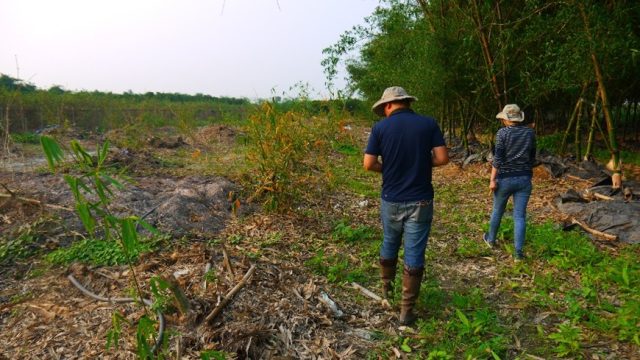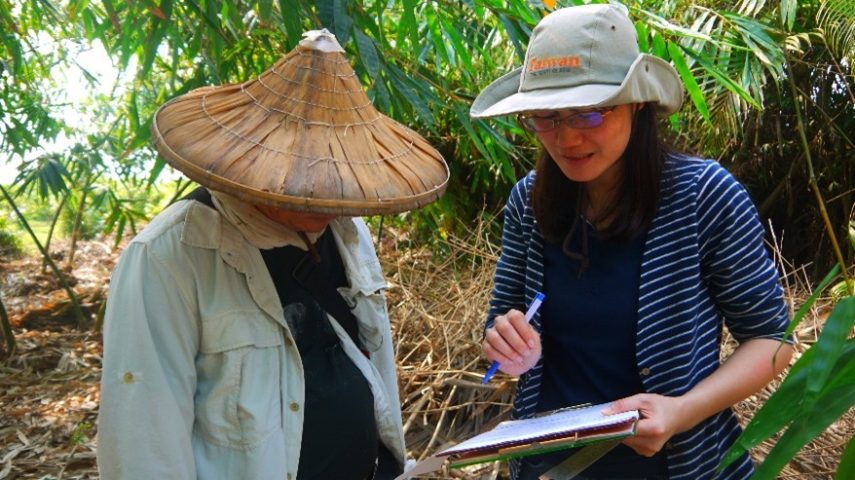Cooperation of Bamboo-Shoots-Farmers, Communities, and Government for farmland-green-treefrog (Zhangixalus arvalis) conservation in an agricultural landscape in southwestern Taiwan
31.08.2025
SUBMITTING ORGANIZATION
Watch Nature Ecological Consultant Co., Ltd (WNECC)
OTHER CONTRIBUTING ORGANIZATIONS
Forestry and Nature Conservation Agency, ministry of Agriculture. (FNCA)
Tainan District Agricultural Research and Extension Station, ministry of Agriculture
Shan-Lin Community Development Association
(SLCDA) LCFTF Vegetable and Fruit Production Co-operative
LCFTF Vegetable and Fruit Production Co-operative
DATE OF SUBMISSION
31/03/2025
REGION
Asia
COUNTRY
Chinese Taipei
KEYWORDS
government -community collaboration, habitat-connectivity, farmland-green-treefrog-friendly label
scheme, bamboo shoots farmers, community-based conservation
AUTHORS
Chuang Meng-hsien, Liu Fang-ju, Liu Tsung-Yu, Watch Nature Ecological Consultant Co., Ltd (WNECC)
Summary Sheet
The summary sheet for this case study is available here.
Author’s profile
Chuang Meng-Hsien, Liu Fang-Ju, Liu Tsung-Yu [Watch Nature Ecological Consultant Co., Ltd (WNECC)]
Chang Tai, Hsu Yu-Ching, Wang Tsung-Wei [Chiayi Branch, Forestry and Nature Conservation Agency, ministry of Agriculture.]
Lo Cheng-Tsung, Huang Jui-Chang [Tainan District Agricultural Research and Extension Station, ministry of Agriculture.]
Sun Chia-Jung [Shan-Lin Community Development Association. (SLCDA)]
Lin Sheng-Wei, Wu Yung-Cheng [LCFTF Vegetable and Fruit Production Co-operative.]
Abstract/summary
Taiwan Ecological Network (TEN) program of the Forestry and Nature Conservation Agency (FNCA) mainstreams biodiversity into cross-sector collaboration to restore and maintain the natural green belts connecting low elevation forests, farmlands, wetlands, ponds, rivers, and coastal areas in Taiwan. Under TEN program, the Chiayi Branch of FNCA launched the “Farmland-Green-Treefrog-Friendly Label Scheme ” with a focus on creating and connecting bamboo forest habitats for the endemic amphibian, farmland-green-treefrogs (Zhangixalus arvalis), in agricultural landscapes. Chiayi Branch of FNCA and Watch Nature Ecological Consultant Co., Ltd (WNECC) partnered with the local communities, bamboo farmers, the other government agencies, and private sectors to promote the Farmland-Green-Treefrog-Friendly Label Scheme and eco brand. The implementation includes the following three stages:
Label Scheme Development Stage (2018-2021):
WNECC, as a facilitator of dialogue and cooperation between local communities, farmers, and Chiayi Branch of FNCA, conducted various outreaching programs to raise the communities’ and the farmers’ awareness of the Farmland treefrogs. With farmers willing to providing bamboo shoot fields for monitoring, treefrog’ populations and habitat use and farmers’ field management behaviors in Dalin and Xikou areas of Chiayi was recorded and analyzed to develop the ” Farmland-Green-Treefrog-Friendly Habitat Management Guidelines”, the predecessor of the “Farmland-Green-Treefrog-Friendly Label Scheme “. The goals of the Guidelines are to maintain suitable habitats for farmland-green-treefrogs, and hopefully to achieve a win-win situation for the frogs and the farmers.
Label Scheme Promotion Stage (2022-2023):
In 2022, the “Farmland-Green-Treefrog-Friendly Label Scheme ” was officially launched. In 2023, diverse approaches such as press releases, seminars, journal articles, market stalls, and environmental education activities promoting the Label Scheme were conducted to increase its visibility in public and other stakeholders. And hopefully to encourage the public to purchase products with label certification. On the other hand, new farmers were encouraged to engage in the label scheme and the farmland-green-treefrog conservation though participating eco-friendly-production courses and activities. In 2022, 14 farmers applied to this scheme with 24 fields, and 12 were certificated. In 2023, 24 farmers with 36 fields, covering an area of 12.6 hectares, were certificated. The number and scale of certificated fields in the Dalin, Xikou, and Minxiong areas is gradually increasing.
Treefrog-friendly Brand Promotion Stage (from 2023-):
The certificated farmers, with the support of the WNECC team and the Chiayi Branch, established a cooperative in April 2023. The cooperative aimed to produce, promote, highlight the conservation value of certificated bamboo shoots, and furthermore to break out of niche audience. Through collective sales of bamboo shoots, offering food and agricultural education services, and developing processed products, the cooperative serves as direct channel for the public and retailers to access and purchase certified products. By 2024, the cooperative had successfully introduced fresh certified bamboo shoots to physical retail channels. Additionally, the Chiayi Branch of FNCA launched the “Hao-Cha-Sun” (Delicious Bamboo Shoots) brand, based on Farmland-Green-Treefrog-Friendly Label Certification. Using the visual imagery of farmland green treefrogs thriving in the bamboo forests managed by certified farmers, the brand introduced a series of packaging materials, cooler bags, plush dolls, and other related products. These diverse products aim to bring conservation action closer to the public.
Overall, the implementation of Label Scheme and the promotion of Treefrog-friendly Brand echoes the strategy and plan of action 2023-2030 of the International partnership for the satoyama initiative.
Keywords
- government -community collaboration
- habitat-connectivity
- farmland-green-treefrog-friendly label scheme
- Zhangixalus arvalis (farmland treefrog)
- community-based conservation
- bamboo shoots farmers
- agricultural landscape
1. Background
The endangered farmland green treefrog (Zhangixalus arvalis) is endemic to Taiwan, and it has a small distribution range restricted to the plains of Yunlin, Chiayi, and Tainan counties. In the Chiayi area, Z. arvalis primarily inhabits bamboo plantations which were mainly privately owned. Due to crop transformation and other anthropogenic land-use change, the area of Z. arvalis’ habitats was decreasing. Therefore, government -community collaboration was applied.
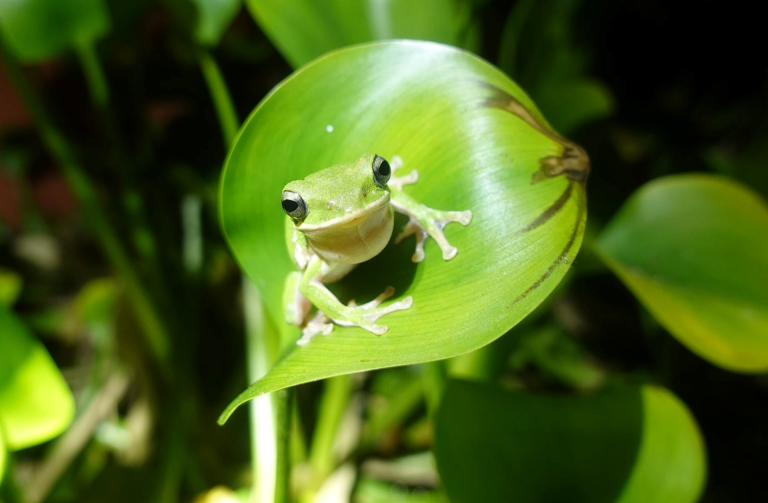
2. Social-Economic and Environmental characteristics of the area
2.1 location
The main study site, Chiayi County’s Dalin Township, is located on the Chia-nan Plain in the southwestern part of Taiwan. The Chia-nan Plain is an alluvial plain formed by several rivers and is one of Taiwan’s major agricultural areas. This region is in subtropical monsoon climate zone, with rainfall primarily influenced by monsoons and terrain. In this area, the winters are dry, and the summers are rainy, with precipitation mainly brought by the plum rains and typhoons during the summer and the fall. Dalin Township is situated at the northernmost part of Chiayi County, bordered by Meishan to the east, Xikou to the west, and Minxiong to the south. It covers an area of 64.17 square kilometers and has a population of approximately 32,000 people. In terms of water systems, the region is in the Beigang River basin.
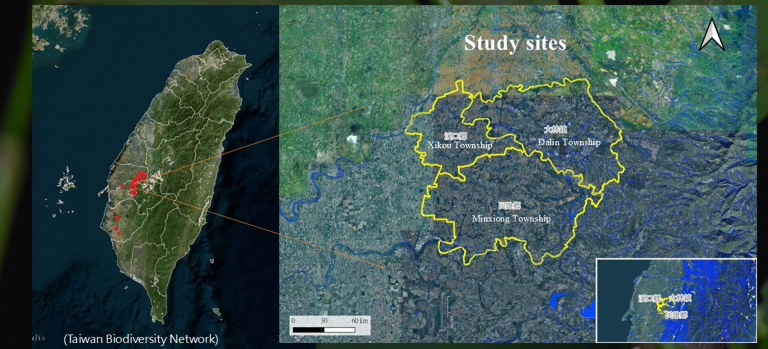
2.2 landscape &Land use and land ownership
Dalin was formerly known as “Dapulin,” which means a place with lush greenery. Many neighborhoods in the town still retain names related to forests, such as “Zhonglin,” “Dingyuanlin,” “Lingtou,” “Linzaiqian,” and “Lintouzi,” reflecting the town’s historically abundant forest scenery. Today, Dalin is an agricultural township known for producing rice, bamboo shoots, oranges, tangerines, pineapples, and orchids.
As mentioned earlier, Dalin is located on the Chia-nan Plain, characterized by fertile soil and a well-developed irrigation system. The area is crisscrossed with farmlands, and despite agricultural transformation in recent years, Dalin still has 2,600 hectares of cultivated land, producing 12,000 metric tons of rice. The town also has approximately 800 hectares dedicated to bamboo shoot cultivation.
3. Objective and rationale
3.1 Our Objective are:
- To maintain and restore the arvalis’s habitats.
- To raise locals’ awareness of farmland green treefrog ( arvalis).
- To build farmers’ capacity of arvalis conservation and friendly practices.
- To increase habitat connectivity in an agricultural landscape.
- To guide consumers in purchasing safe and biodiversity-friendly produce.
3.2 Rationale
- Population status of farmland-green-treefrog.
The farmland-green-treefrog, Zhangixalus arvalis (Lue et al. 1995), is an amphibian species endemic to Taiwan. It is listed as a Category II Rare and Valuable Protected Wildlife Species by the Ministry of Agriculture. Its population is limited to the low-altitude hills and plains south of the Zhuoshui River and north of the Erren River. It is limitedly distributed in Yunlin County, Chiayi County, Chiayi City, and the Madou and Yongkang Sankandian areas in Tainan. Estimates of Z. arvalis’s population suggest there are about 13,466 to 26,395 individuals in Yunlin, approximately 592 in the Madou Zongye area of Tainan, around 914 in the Sankandian area, and about 139 individuals were found in a survey at Shetuan Elementary School in Dalin Township, Chiayi. The total population in the Chiayi area is estimated to be around 7,700 individuals.
- Threats: habitat loss & crop transformation.
The farmland-green-treefrog is arboreal, preferring habitats such as mixed forests, bamboo forests, and orchards, with the highest proportions found in bamboo forests and mixed forests. It selects unpolluted habitats, have standing water, low light, leaf litter, and low levels of disturbance. Fang-Hong Chiu discovered that the distribution of the Z. arvalis’s is primarily within 50 meters of rivers, indicating that the distribution of water systems is a significant factor affecting its distribution. In recent years, with the reduction of mixed forests around rivers, bamboo groves have become the environment most resembling forests within agricultural landscapes. Therefore, large-scale agricultural planting of bamboo forests has become a more intact habitat available for the frogs. However, due to crop conversion to meet market demands and the declining farming population, suitable bamboo forest habitats for the Farmland-green-treefrog are also gradually diminishing.
- How do bamboo forests meet arvalis’s habitat requirements?
Their primary breeding season is approximately from mid-April to October each year, and the breeding activity of males increases with rising rainfall and temperatures. During the breeding season, most males hide at heights greater than 4 meters in densely vegetated areas during the day. At night, they move to the lower layers of the bamboo forest (0.3 to 4 meters) and gather to perform lek calling to attract females for mating (Chuang 2000, Hsieh 2004). Once a female successfully pairs with a male, they move to the edge of a water-accumulated area, 10-20 cm deep, to lay foam nests, which are then covered with fallen leaves to reduce water loss. The tadpoles can metamorphose into froglets in as short as 18 days after hatching (Chen 2005). In winter, Z. arvalis’s have been recorded hiding in leaf litter, plastic sheets, and other low, temperature-stable spots in bamboo groves (Chuang et al. 2021). Reviewing the ecological habits of Z. arvalis’s, it is evident that bamboo forest production modes and environments can meet their life history requirements. The dense canopy cover of bamboo groves provide sufficient hiding spaces for Z. arvalis’s. Compared to other fruit trees, bamboo forest experience relatively lower human interference. Additionally, to ensure the smooth growth of bamboo shoots and prevent direct sunlight, farmers generally do not deliberately clear fallen leaves and regularly irrigate the groves. Therefore, bamboo groves can be considered suitable habitats for Z. arvalis’s in areas adjacent to human activities, outside mixed forests.
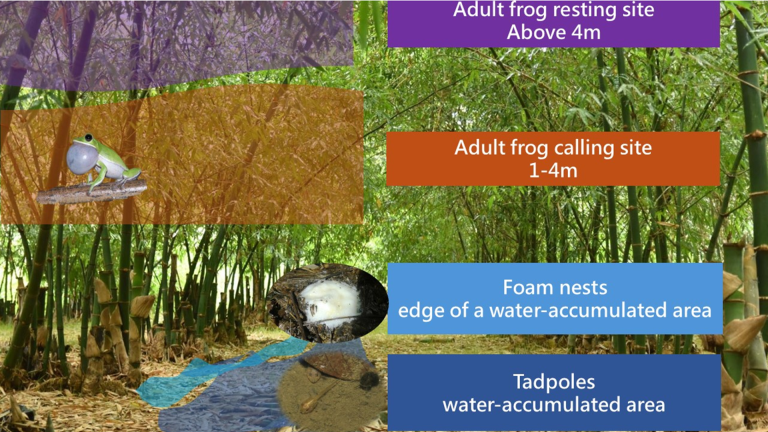
- Government -community (farmers) collaboration.
Most of the bamboo forests mentioned above are privately owned. To address this, conservation initiatives leveraging public-private partnerships were introduced, such as the farmland-green-treefrog-friendly label scheme. The Chiayi Branch of the Forestry and Nature Conservation Agency, in collaboration with WNECC, conducts surveys to monitor the population and habitat usage of Z. arvalis in these bamboo forests. Farmers adhere to habitat management principles and earn the farmland-green-treefrog-friendly habitat certification, which helps consumers recognize eco-friendly products. By purchasing these products and through retailers promoting bamboo shoot sales, consumers directly support farmers’ conservation efforts. This approach helps preserve and enhance the area and connectivity of Z. arvalis habitats within bamboo groves.
4. Activities Description
4.1 Treefrog Friendly label scheme development & implement. (scheme development, farmers recruitment, empowerment)
- The aims of the Treefrog Friendly label scheme
The Treefrog Friendly Label Scheme aims to create suitable habitats for the farmland green treefrog and to encourage farmers to use pesticides and fertilizers reasonably. These friendly fields would be small, protected areas scattered throughout agricultural landscapes, serving as base sites of conservation and the source of the farmland green treefrog. This scheme hopes to gradually influence the bamboo shoot production in the Chiayi area, creating an industry model that meets both agricultural and frog conservation needs. It provides clear methods for farmers to contribute to the conservation and aims for diligent farmers to be recognized by consumers. Through the label, consumers can identify, and purchase bamboo shoots produced in a treefrog friendly way.
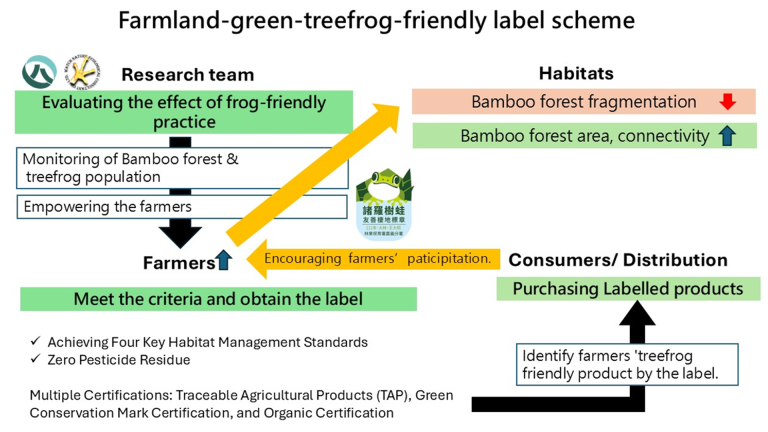
- The Development of Treefrog Friendly label scheme
To ensure that the guidance of Treefrog Friendly label scheme. meet the farmland green treefrog’ habitat need, and.be convenient and friendly for farmers to manage on-site, we conducted habitat surveys of the farmland green treefrog and interviewed the farmers. The process is detailed as follows:
- Literature Review and On-site Survey of Farmland Green Treefrog Habitat Requirements: We reviewed previous literature related to the reproductive behavior, population surveys, and habitat utilization of the farmland green treefrog. Additionally, we conducted population surveys and recorded microhabitat utilization of the farmland green treefrog in the bamboo forests of the Dalin area.
- Farmer Interviews and Bamboo Forest Management Records: Through the interviews, we understood the management practices of farmers in bamboo forest, including the factors crucial to the farmland green treefrog’s activities such as water sources, bamboo forest renewal periods, and pest management. We also recorded common management practices in the fields.
Figure 5: Field investigation and farmer interview
Based on the findings from the above surveys and interviews, we established the four key habitat management principles:
- Maintaining the leaf litter: To provide a suitable spawning environment for the farmland green treefrog, a leaf litter thickness of at least 4 cm was recommended.
- Maintaining bamboo forest canopy density: To facilitate easier movement of the farmland green treefrog between bamboo stalks, an average canopy density of 60% was recommended.
- Irrigating Regularly or digging small pools: Maintain sufficient water accumulation areas for the farmland green treefrog to breed, allowing tadpoles to grow into young frogs, a water accumulation lasting for at least 18 days was required.
- Adjusting bamboo forest renewal frequency: To reduce disturbance or to leave parts of the bamboo forest as refuges for the farmland green treefrog, with a bamboo forest renewal cycle of over 3 years was required.
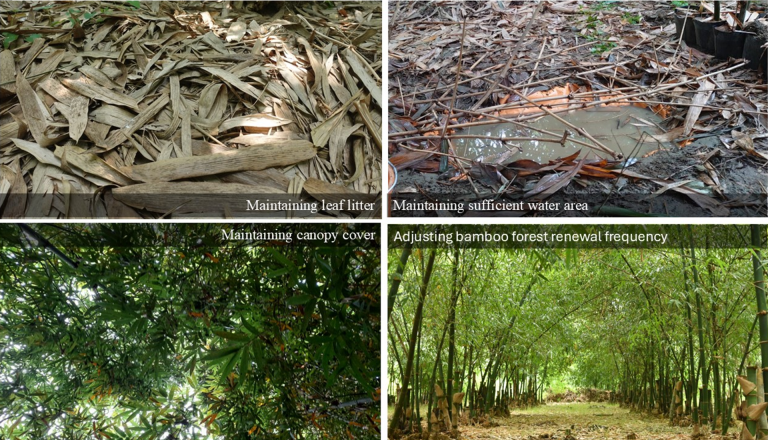
In addition to the four criteria above, farmers have been encouraged to adopt more land-friendly practices gradually, rather than rushing them immediately to cease pesticide usage or switch to organic farming. Therefore, basic and optional criteria were as follows: The basic criterion for obtaining the label is to pass pesticide residue tests, ensuring no pesticide residues. And traceability certification, Green Conservation Mark certification, or organic certification are optional.
4.2 Engaging local communities and bamboo shoot farmers.
- Assistance from Key Person in Communities:
In early 2018, during the Label Scheme Development stage, WNECC visited community organizations and schools in Dalin, Chiayi, that had previously participated in farmland green treefrog conservation efforts to assess their current organizational status and concerns. These interviews revealed that, due to personnel changes, farmland green treefrog conservation was no longer a priority for these organizations and schools. Consequently, WNECC shifted its focus to the Shanglin Community and Xikou Area.
The Shanglin Community has long been dedicated to addressing local environmental issues. Ms. Sun Jia-Rong, director of the Shanglin Community Development Association, actively practices environmentally friendly farming and maintains strong connections with local bamboo shoot farmers who share similar values. With her support, WNECC successfully engaged bamboo shoot farmers in informational briefings, where they identified the locations of their fields and shared areas where they had observed the farmland green treefrog.
In the Xikou Area, Mr. Lai Rong-Xiao, honorary chairman of the Wild Conservation Association and operator of Zhuluoji Farm—a key site for farmland green treefrog conservation in agricultural landscapes—played a crucial role.
Thanks to the efforts of these key individuals, about five bamboo shoot farmers contributed their bamboo fields during the first year, enabling the research team to study how the farmland green treefrog utilizes bamboo habitats. These introductions marked an important first step for the research team to integrate into the community.
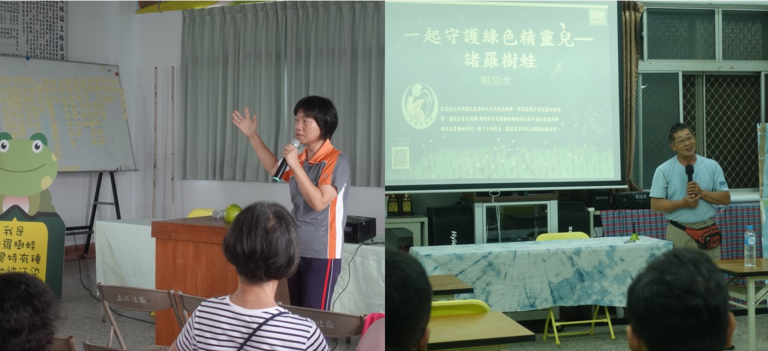
- Assistance from Farmers’ Associations
Beginning in 2019, the Dalin Farmers’ Association became a key partner in expanding outreach to more bamboo shoot farmers. Additionally, participating farmers recommended like-minded peers to join the initiative. At this stage, approximately 8 to 10 farmers were willing to provide access to their fields, supporting the team in developing habitat management strategies for the farmland green treefrog.
- Farmer Recruitment, Guidance, and Empowerment
When farmers applied to participate in treefrog-friendly practices, surveys were conducted to assess their bamboo fields and surrounding environments, including water sources, proximity to contiguous bamboo forests, field boundary types, and surrounding land use. Additionally, the fields were evaluated for their potential to meet habitat standards.
To deepen farmers’ understanding of farmland green treefrog conservation, various courses and workshops were organized. These covered topics such as habitat creation techniques, eco-friendly agricultural practices, diverse agricultural certifications, and cooperative operations management.
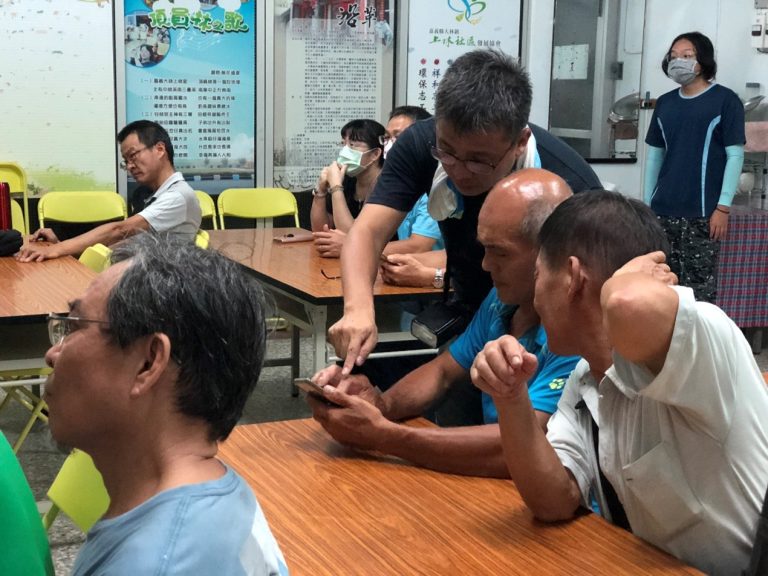
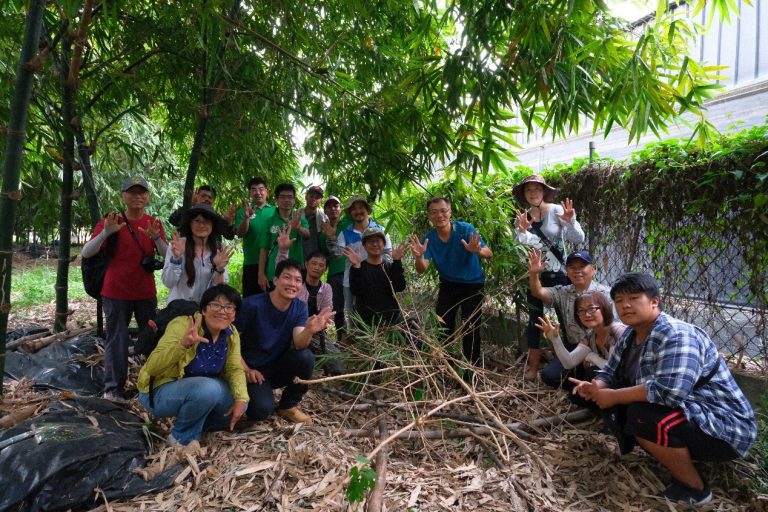
- Facilitating collaboration and communication
To facilitate collaboration among farmers and local partners involved in farmland green treefrog conservation, meetings and year-end appreciation dinners were organized. Each formal meeting focused on a specific discussion theme, typically addressing feedback on field management practices or fostering technical exchanges among farmers on topics such as fertilizer use, agricultural product preservation, and pest control. Informal gatherings, like appreciation dinners, encouraged participation from farmers’ families, offering an opportunity to acknowledge and celebrate their contributions to treefrog conservation. Communication and coordination with farmers were maintained through a LINE group, which provided timely updates and reminders based on observations from field surveys.
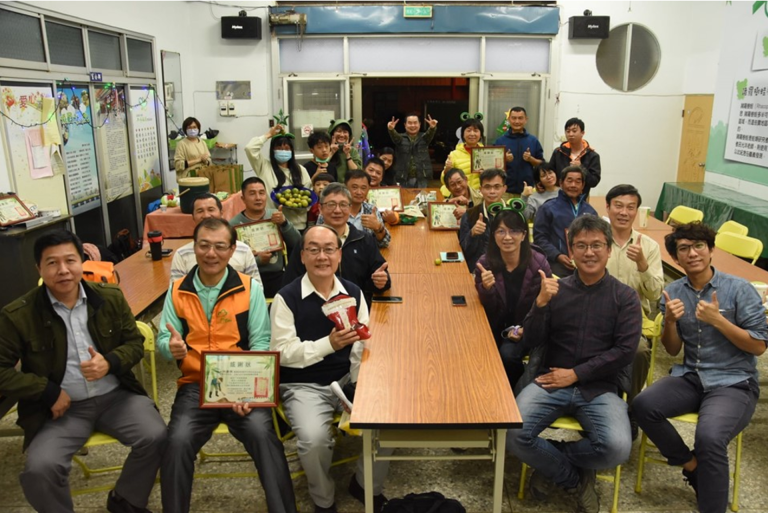
4.3 Habitat Environment Audit
From April to September, field investigations are conducted every two months to monitor key habitat creation parameters, including leaf litter thickness, bamboo crown density, renewal conditions, and artificial water levels. These findings are compared with monthly amphibian monitoring data from the same period to evaluate the implementation of conservation practices by farmers. Additionally, the effectiveness of the management methods is assessed based on their suitability and utilization by the farmland green treefrog.
- Leaf Litter Thickness
Measure the thickness of leaf litter near the water bodies with a ruler.
- Monitoring of Artificial Water Levels and Amphibian Utilization
According to the literature, rainwater-filled bamboo grooves and low-lying water accumulation areas within bamboo forests are typically used by the farmland green treefrog for breeding. A period of over 18 days is required by tadpoles to metamorphose into froglets. Water is easily retained in clay soil after rain or irrigation, leading to the formation of puddles. However, in well-drained soil, water retention in bamboo fields is challenging without intentional irrigation or continuous rainfall. To address this, guidance is provided to farmers for the creation of suitable water bodies within their fields, and water levels are monitored to ensure they remain sufficient for reproduction and tadpole growth.
- The Survey of Crown Density
The crown density of new and old bamboo differs significantly after renewal. By measuring crown density over the course of a year under various management methods, the impact on the treefrog population can be assessed. In forestry surveys, sample points are typically established along two diagonals of the sample area, and canopy photos are taken at equal intervals using a camera. These photos are analyzed using ImageJ software to calculate the canopy cover ratio. Field surveys are conducted every two months, with any changes in the field recorded and updated separately. The formula for calculating crown density is:
Crown Density = Area Covered by Canopy / Total Area.
- Field Renewal and Management Status
During monthly surveys, the field management status is assessed based on on-site conditions to evaluate the impact of human interference on the farmland green treefrog. The management statuses are categorized as follows:
- Routine Management: Only common field practices, such as pruning branches and leaves, are performed.
- Specific Bamboo Removal: Specific bamboo clumps are removed and renewed.
- Small-scale Bamboo Renewal: Bamboo is renewed in rows or sections, resulting in significant changes to the field (removal of old bamboo forest in less than 30% of the field area).
- Large-scale Bamboo Renewal: More than 30% of the bamboo forest area is removed.
- Certification and Qualification Maintenance
- Ensure that the farmland consistently follows the habitat management practices friendly to the Farmland Green Treefrog.
- Conduct two biological surveys in the certified farmland each year.
- Participate in at least two friendly agriculture courses organized by the Ministry of Agriculture or visit activities held by this project within two years. For courses not organized by this project, participants must take a photo of the sign-in sheet as proof of attendance.
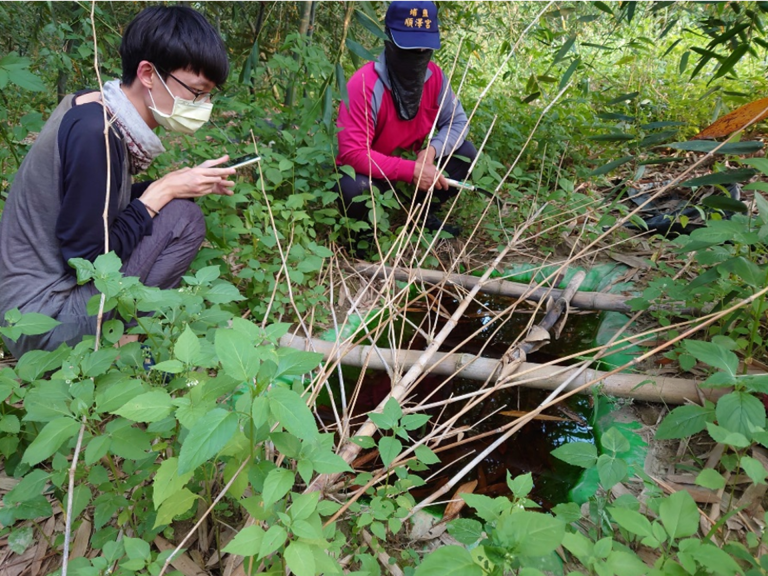
4.4 Farmland Green Treefrog (Z. arvalis) investigation.
- The Survey of the number of Farmland Green Treefrog
Once in a month, in breeding season April to September, within a 250-meter radius extending outward from the central point of the field area, surveys will be conducted using the Visual Encounter Method (VEM) in combination with audio strip transects (AST). The number of farmland-green tree frogs and other sympatric amphibian species within and outside the field area were recorded.
4.5 The Survey of Bamboo shoot marketing.
The purpose of the label is to ensure that consumers and distribution channels can easily recognize farmers’ treefrog-friendly products in the market. Consequently, understanding how farmers market and sell their products is essential for developing effective strategies. To achieve this, interviews were conducted with farmers and local agricultural organizations to gain insights into the current practices of selling and marketing bamboo shoots.
From these interviews, we learned that:
- Most farmers deliver their bamboo shoots to local collection centers. Early each morning, after the farmers harvest the bamboo shoots, the bamboo shoots are sent to the collection centers for cleaning, grading by size and weight, and packaging. The processed bamboo shoots are then distributed to wholesale markets, restaurants, or other channels.
- A few young and experienced farmers have ventured into managing their own brands. With fresh ideas or access to greater resources, these farmers are more inclined to explore diverse sales channels or establish personal brands. This approach not only helps them increase the value of their bamboo shoots but also reduces dependence on wholesalers. The farmers expected that with label certification affirming their treefrog conservation efforts could potentially increase the value of the bamboo shoots in the future.
The farmers who have developed their own brands, enabled to display the Treefrog-Friendly Label during direct sales. This helps boost product recognition and allows them to command higher prices. However, for farmers who sell their bamboo shoots through collection centers, the price and value cannot benefit from their tree frog conservation efforts or label certification. This is because collection centers combine bamboo shoots from all suppliers, making it impossible to differentiate between certified and non-certified products. Thus, forming a collaborative production organization or agricultural enterprise composed of label-certified farmers is essential for effectively promoting the label’s adoption and impact.
4.6 Branding & outreach program.
- The establishment of Chiayi Farmland Treefrog Friendly Vegetable and Fruit Production Cooperative, Limited Liability (LCFTF-VFPC)
The certificated farmers, with the support of the WNECC team and the Chiayi Branch, established the Chiayi Farmland Treefrog Friendly Vegetable and Fruit Production Cooperative, Limited Liability (LCFTF-VFPC) in April 2023. The cooperative aimed to produce, promote, highlight the conservation value of certificated bamboo shoots, and furthermore to break out of niche audience. Through collective sales of bamboo shoots, offering food and agricultural education services, and developing processed products, the cooperative serves as direct channel for the public and retailers to access and purchase certified products. By 2024, the cooperative had successfully introduced fresh certified bamboo shoots to physical retail channels such as MUJI and Santa Cruz.
- The Farmland Green Treefrog Friendly Brand: Hao-Cha-Sun” (Delicious Bamboo Shoots)
To enhance the perceived value of the Farmland Green Treefrog-Friendly brand among consumers, we aim to systematize the identification and impression of treefrog-labeled products while fostering a community to build long-term brand recognition and strengthen connections with consumers across virtual and physical spaces.
We establish the brand positioning through two primary approaches:
Internal Focus
Leveraging the results of a SWOT analysis and feedback from internal stakeholders—including Chiayi Branch of FNCA and LCFTF-VFPC—gathered through meetings and informal discussions, we have developed an initial framework for the brand positioning and related elements of the Farmland Green Treefrog label.
External Feedback
By engaging in domestic eco-friendly brand exchange meetings, conducting interviews with target audiences, collecting feedback at various stages of exposure, hosting product trials, and analyzing real-world market usage, we refine the brand elements and solidify execution strategies for the future. Efforts to enhance brand exposure include the development of websites, product packaging, promotional materials, and experiential activities.
This dual approach ensures a comprehensive and strategic foundation for building and promoting the brand effectively.
Additionally, the Chiayi Branch of FNCA launched the “Hao-Cha-Sun” (Delicious Bamboo Shoots) brand, based on Farmland-Green-Treefrog-Friendly Label Certification. Using the visual imagery of farmland green treefrogs thriving in the bamboo forests managed by certified farmers, the brand introduced a series of packaging materials, cooler bags, plush dolls, and other related products. These diverse products aim to bring conservation action closer to the public.
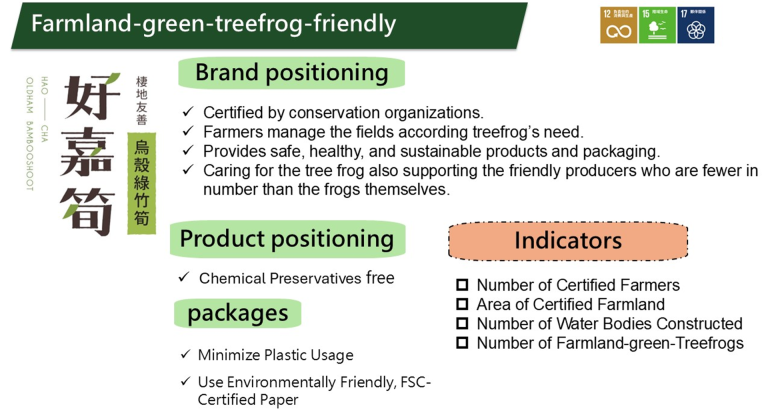
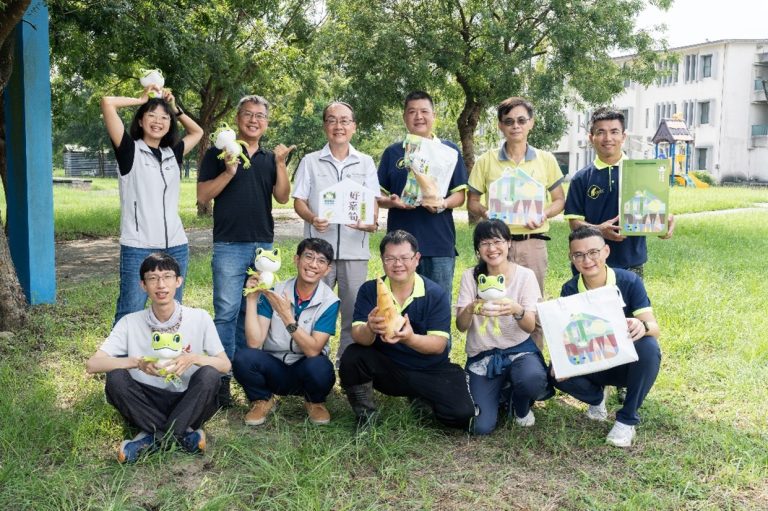
5 Results and lesson learned
5.1 Results
- Ecological aspect
• the number of farmers and farms
Since its official launch in 2022, the program has experienced remarkable growth, with the number of certified farmers doubling from 12 to 25 and the certified field area expanding from 6.4 hectares to 15.6 hectares by 2024.

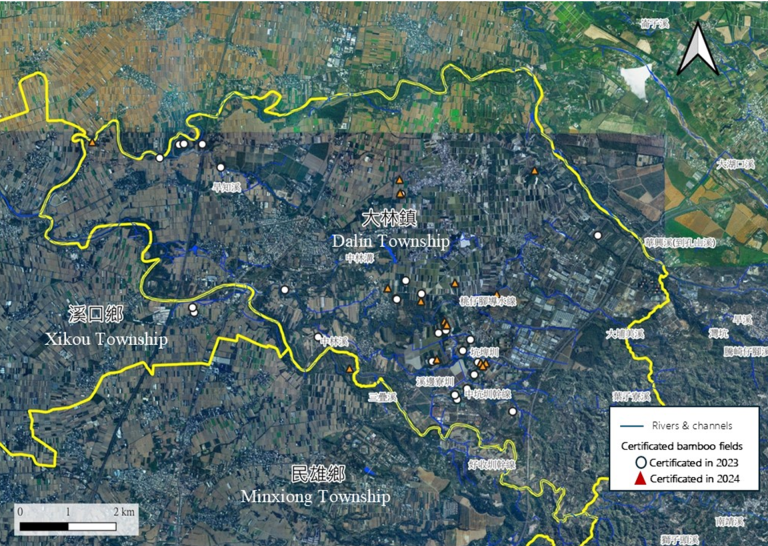
• The farmland green treefrog in bamboo forest.
From April to September 2024, a total of 1,239 amphibian records were documented across various fields using the visual encounter survey method, with treefrogs accounting for 488 individuals (39%).
The density of farmland green treefrogs during these months showed a different trend compared to 2022 and 2023. This variation is attributed not only to the rotation of survey areas but also to the weather conditions during the survey weeks. There are records of farmland green treefrogs breeding near the artificial water bodies created within the fields, and tadpoles have also been found inhabiting these water bodies.
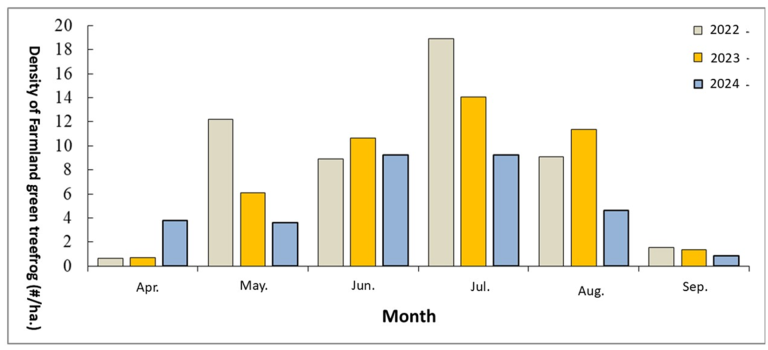
- Social aspect
• Local Communities
Through a community development approach and the establishment of citizen science patrols, local awareness and recognition of farmland green treefrog conservation have notably increased. Inspired by the success in Shanglin Community, the neighboring Pinglin Community has also joined the conservation efforts, actively participating in treefrog patrols to support the species’ protection.
• Bamboo Shoot Farmers
Certified farmers have gradually developed an interest in observing treefrogs, finding a sense of accomplishment in their conservation efforts. They have also expanded the initiative by inviting other bamboo shoot farmers to participate in the habitat labeling scheme. As advocates for treefrog conservation, these farmers play a pivotal role by sharing bamboo forest management practices tailored to the needs of the farmland green treefrog. Furthermore, the first group of certified farmers spearheaded the establishment of a production cooperative, encouraging broader participation. In addition to obtaining the habitat label, these farmers actively pursue various eco-friendly certifications to enhance the uniqueness and value of their products.
•Other Local Organizations
The Dalin Township Office has increasingly recognized the importance of treefrog conservation. With its support, the LCFTF-VFPC secured funding for local revitalization initiatives to advance treefrog conservation and marketing efforts. Additionally, the Dalin Township Farmers’ Association’s 4-H Club has incorporated the story of the treefrog and bamboo shoots into its promotional themes, further raising awareness and engagement of local schools. The eco-friendly Zhuoluo Treefrog products have also become part of the Chiayi County Government’s brand CHIAYUM (Chiayi + yummy), representing one of the county’s premium, fresh, and safe agricultural products selected for consumers nationwide. The Chiayi County Government will continue to assist in expanding marketing channels for these products
•Interagency Collaboration
The Tainan District Agricultural Research and Extension Station provides technical guidance to farmers in the labeling program, advancing the “Eco-Friendly Cultivation of Black-Shelled Oldham Bamboo Shoots.” By offering strategies and resources for soil management, fertilizer use, and pest control, the station supports treefrog-friendly farming practices while minimizing the environmental impact of pesticides and herbicides.
Two certified farmers adopted Integrated Pest Management (IPM) for Black-Shelled Oldham Bamboo Shoots under the station’s guidance, improving soil pH based on soil test results and refining cultivation techniques. These improvements resulted in a 10–22% increase in bamboo shoot yields.
Through collaboration between the Tainan Agricultural Research and Extension Station and the Chiayi Branch of the Forestry and Nature Conservation Agency, farmers have not only created wildlife habitats, promoting greater biodiversity but also enhanced the production and quality of eco-friendly bamboo shoots.
•General Public/ consumers
Previously, the public learned about Farmland Green Treefrog conservation and its eco-friendly agricultural products primarily through individual farmers’ personal brands. With the establishment of the cooperative and the introduction of the certification brand, this eco-friendly label has expanded into Japanese retail chains. This development provides the public with more diverse channels to engage with Farmland Green Treefrog conservation efforts and related products. However, ongoing monitoring of public feedback on packaging materials remains essential for further improvement.
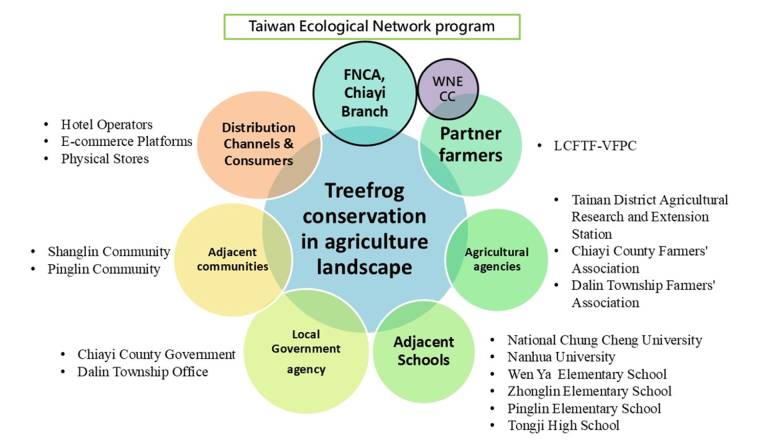
- Economic aspect
•Price Increasing
The LCFTF-Vegetable and Fruit Production Cooperative purchases bamboo shoots from certified farmers at prices exceeding those offered by collection centers. The purchasing rates are as follows:
-
- Bamboo shoots certified with the Treefrog Label are purchased at 2 NTD per kilogram above the collection centers’ price.
- Bamboo shoots certified with the Green Conservation Mark are purchased at 4 NTD per kilogram above the collection centers’ price.
- Bamboo shoots with Organic Certification are purchased at 6 NTD per kilogram above these collection centers’ price.
Additionally, farmers who obtain the Traceable Agricultural Products (TAP) label receive an extra 1 NTD per kilogram on top of the rates listed above. These tangible economic incentives directly support farmers’ conservation efforts and encourage sustainable practices.
•Multiple channel
After marketing the tree frog ecological brand through the cooperative, a diverse range of sales channels has been established, including hotel operators (Grand Hotel Taipei, Silks Place Tainan), e-commerce platforms (Rakuten, AFAsale), and physical stores (MUJI, Santa-Cruz). Distinct characteristics and the potential benefits of collaborating with the channels are as table1.
The diversified layout across these channels supports the Treefrog eco-friendly brand in reaching various consumer groups, achieving the following benefits:
-
- Increasing Conservation Awareness:
By engaging different audiences through various channels, the brand and its product stories deepen public understanding and support for habitat-friendly practices and Treefrog conservation efforts. - Expanding Market Influence:
Leveraging both online and offline strategies gradually increases the market penetration of branded products, allowing more consumers to participate in and support conservation initiatives. - Building Sustainable Value:
Combining the brand story with product value not only drives short-term sales but also builds the brand’s social impact over the long term, achieving a win-win goal of conservation and economic development for local farmers.
- Increasing Conservation Awareness:
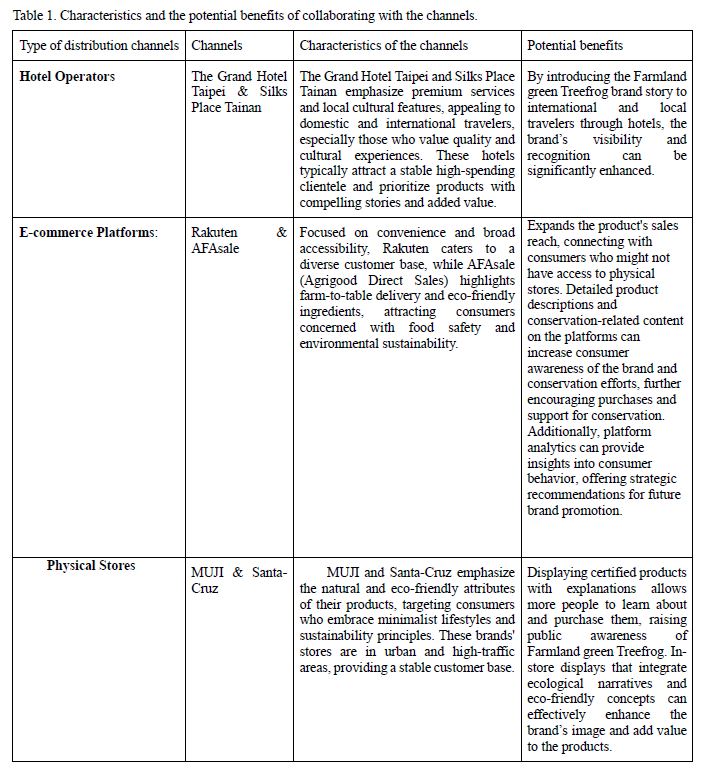
5.2 Lesson learned
- Project Challenges
•Market Acceptance
Although distribution channels express interest in ecological brands and recognize the quality and conservation benefits of these agricultural products, procurement decisions remain largely cost-driven. While our goal is to elevate the value of agricultural products through ecological conservation, it is equally important to consider consumer acceptance of the final retail price. At present, we are in the early stages of building consumer awareness about Farmland Green Treefrog-friendly products and must continue to strengthen the promotional efforts.
- Opportunities
The agricultural landscape is dynamic, shaped by policy, technology, and natural resource drivers among others, which together affect farmer decisions and conservation trends. In recent years, companies have increasingly emphasized sustainable investment by integrating Environmental, Social, and Corporate Governance (ESG) factors into investment decisions. Additionally, at the 2022 Fifteenth Conference of the Parties to the Convention on Biological Diversity (CBD COP15), the Kunming-Montreal Global Biodiversity Framework was adopted. This framework expects large corporations and financial institutions to regularly monitor, assess, and disclose biodiversity risks, dependencies, and impacts. Currently, a growing number of financial institutions include corporate nature conservation actions in their investment evaluations, thereby guiding companies to focus on biodiversity through financial incentives.
Given these developmental trends, there is an opportunity to increase corporate willingness to collaborate. We will attempt to encourage companies to procure bamboo shoots certified by the Farmland Green Treefrog Habitat Label. Promotional activities will be organized, in collaboration with local communities, farmers, and research teams, to enhance corporate and public understanding of the Farmland Green Treefrog, conservation actions, and active participation in habitat maintenance and management.
Activities such as night-time frog observations, food and agriculture education, and working holidays will continue to be translated into themes or formats that appeal to corporate interests. These themes could include educational training, employee capacity building, deep travel experiences, and team-building activities. Additionally, various companies’ core technologies will be leveraged to increase the attractiveness of corporate participation.
- Alignment with IPSI’s 2023-2030 Development Strategy and Action Plan
This case study, Conservation Action for the Farmland green Treefrog in Agricultural Landscapes, centers on habitat protection by creating conservation areas within agricultural landscapes outside traditional protected areas. Additionally, through the implementation of a habitat labeling certification scheme, consumers can identify farmers’ eco-friendly habitat management practices for the Treefrog. Products are produced and marketed through cooperatives formed by certified farmers, establishing a foundation for SEPLS-based products to enter the market.
Overall, this case aligns with IPSI’s 2023-2030 Development Strategy and Action Plan, specifically:
III. Area-Based Conservation Measures (including protected areas and Other Effective Area-Based Conservation Measures, OECM)
V. Market Mechanisms and Development of Sustainable Production-Consumption Value Chains
Particularly within the scope of Market Mechanisms and Sustainable Production-Consumption Value Chains, the action seeks to develop SEPLS-centered product value chains, linking to SDG 12. It also promotes consumer understanding of sustainable production and consumption, as well as the roles and values of SEPLS. Throughout the process, efforts have been made to analyze and summarize the marketing challenges and obstacles within the current production-consumption value chains.
6. Conclusion
- Key figures are crucial in facilitating locals participating in conservation action.
- Conservation measures promoted in the name of eco-friendly agricultural practice must fully consider the habitat requirements of species.
- Farmers need to be gradually guided in their investment in eco-friendly farming practices.
- Support from consumers and distribution channels is key to boosting farmers’ confidence and encouraging their continued participation in the labeling initiative. Through the sustained involvement of farmers, the preservation of Farmland Green Treefrog habitats within agricultural landscapes can be effectively achieved.
References and Bibliography
Chen, S., Chuang, M. H., Shiu, H. J., & Liu, J. N. 2021. Quantifying the effect of land-cover change on the endangered Farmland Green Treefrog (Zhangixalus arvalis) in an agricultural landscape: Implications for conservation. Zoological Studies 60: 1-13.
Lü, Guang-Yang. (2004). The Impact of Habitat Fragmentation on the Genetic Structure of Farmland Green Treefrog Populations. National Science Council, Executive Yuan, pp. 1-16.
Chiu, Fang-Hung. (2010). Study on the Habitat Suitability Assessment and Population Estimation of Farmland Green Treefrog in Yunlin County. Master’s Thesis, Graduate Institute of Environmental Resources Management, Universal Institute of Technology, pp. 1-98.
Chen, Qing-Zun. (2005). Study on the Metamorphosis and Development of Farmland Green Treefrog Tadpoles Affected by Water Level Changes in Temporary Water Bodies. Master’s Thesis, Department of Ecology, Providence University, pp. 1-44.
Chen, Rou-Yu, Lin, Yu-He, Liang, Shi-Pei, Ni, Guo-Shun, Zhuang, Meng-Xian. (2007). Research on the Population, Inbreeding Depression, and Habitat Restoration Experiments of Farmland Green Treefrog in Madou Area. 2007 Annual Symposium on Animal Behavior and Ecology, p. 54.
Chen, Xin. (2016). The Impact of Agricultural Land Use Changes on the Population of Farmland Green Treefrogs in Chiayi Area. Master’s Thesis, Department of Forestry and Natural Resources, National Chiayi University, pp. 1-54.
Zhang, Zi-Jian, Chen, Qing-Zun, Liu, Bo-Lin, Chiu, Fang-Hung. (2010). Survey on Habitat Distribution and Population Estimation of Farmland Green Treefrog in Yunlin County. Journal of Humanities and Technology, 11, pp. 19-30.
Zhang, Yi-Jun. (2021). Conservation Genetics Research on the Endangered Amphibian Farmland Green Treefrog in Taiwan. Endemic Species Research and Conservation Center, Council of Agriculture, Executive Yuan, pp. 1-8.
Zhuang, Meng-Xian. (2011). Monitoring and Conservation Research Plan for the Farmland Green Treefrog (Zhangixalus arvalis), a Protected Wildlife Species in Chiayi County. Agricultural Bureau, Chiayi County Government, pp. 1-85.
Zhuang, Meng-Xian. (2014). Final Report on the Ecological Survey and Planning of Farmland Green Treefrogs’ Habitats in Tainan City. Agricultural Bureau, Tainan City Government, pp. 1-89.
Zhuang, Meng-Xian, Liu, Fang-Ru. (2019). Final Report on the “Establishment and Promotion of Friendly Farming Practices for Farmland Green Treefrogs in Chiayi Area” Commissioned Professional Service Project. Chiayi Forest District Office, Council of Agriculture, Executive Yuan, pp. 20-40.
Zhuang, Meng-Xian, Liu, Fang-Ru, Liu, Zong-You. (2021). Final Report on the Promotion and Research of Friendly Habitat Management Methods for Farmland Green Treefrogs in Chiayi Area Commissioned Professional Service Project. Chiayi Forest District Office, Council of Agriculture, Executive Yuan, pp. 1-253.
Zhuang, Zhen-Shuo. (2000). Study on the Reproductive Behavior of Farmland Green Treefrogs (Rhacoporus arvalis). Master’s Thesis, Department of Life Science, National Taiwan Normal University, pp. 1-30.
Huang, Yan-Lin. (2008). Establishment of a Promotion Mechanism for Eco-label Application in the Conservation of Farmland Green Treefrog and Green-labeled Bamboo Shoots. Master’s Thesis, Graduate Institute of Environmental Resources Management, Universal Institute of Technology, pp. 1-175.


